
Dress Uniforms
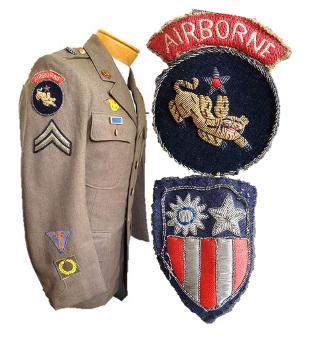
The standard 4-pocket Class-A uniform jacket issued through the last year of WWII. This uniform to a veteran from the China-Burma-India theater. This veteran enlisted in 1942 and served as a radio operator/flight controller in the 10th Air Force in India, Burma, and China.
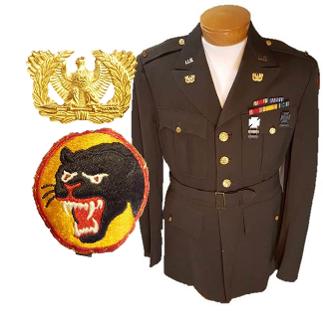
A dress uniform to a Warrant Officer of the 66th Infantry Division. Warrant Officers were specialized soldiers that ranked above enlisted men, but below commissioned officers. This unidentified uniform was found near Madison, Wisconsin and its ribbons show service in Europe during WWII.
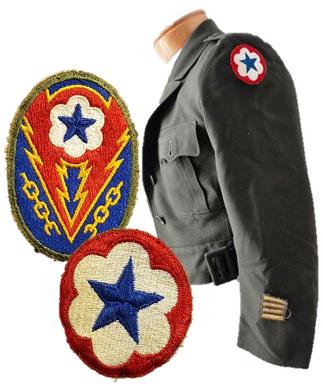
Women's cropped army jacket with Army Service Forces patc hand sleeve bars indicating two years service overseas.
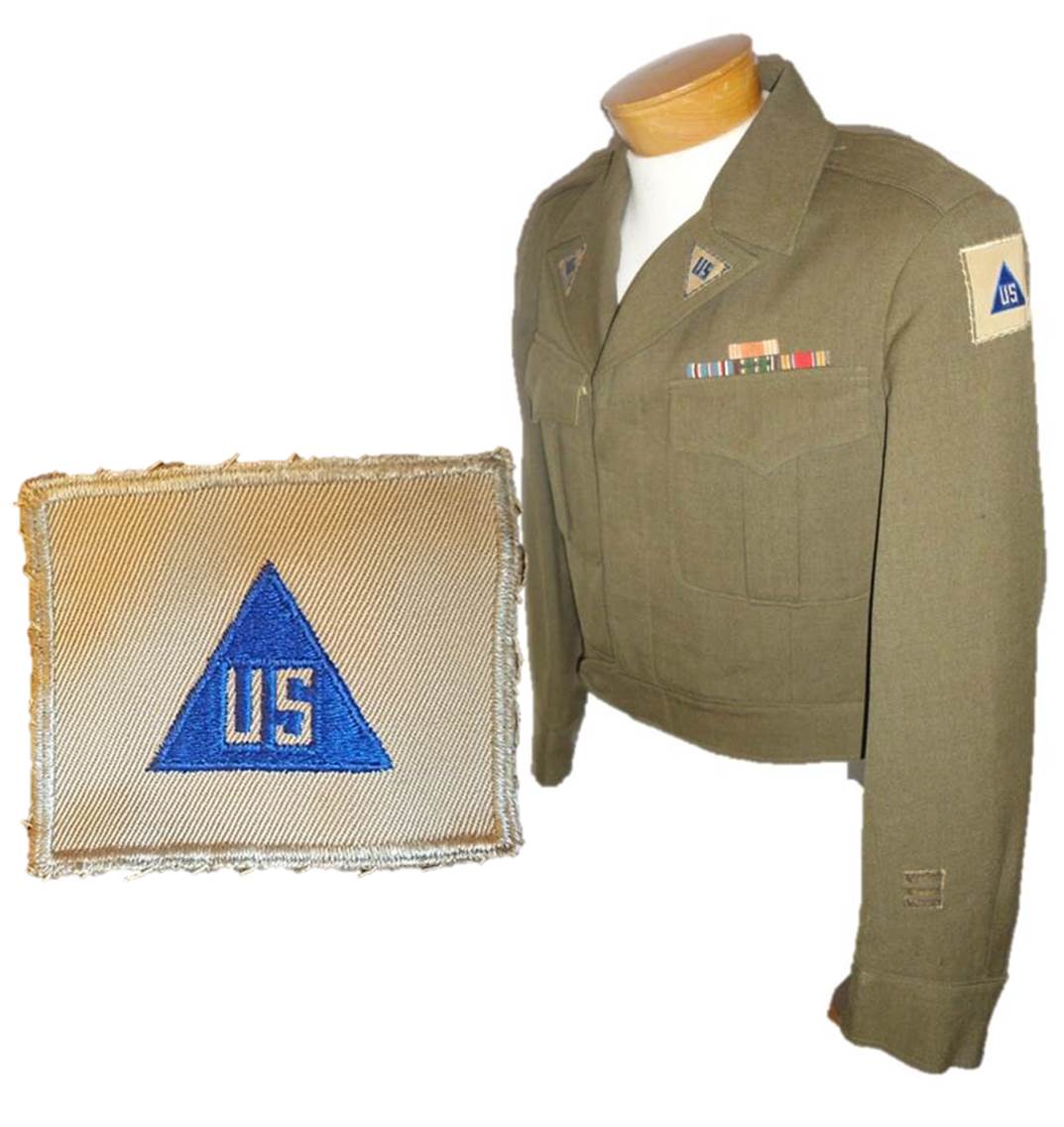
A non-combatant uniform, as indicated by the "US" patches on the shoulder and collar. The veteran who wore this was first an enlisted soldier (as indicated by the campaign ribbons) and later was a lawyer for war crimes trials. The three bars on the sleeve indicate a 18 months of overseas service.
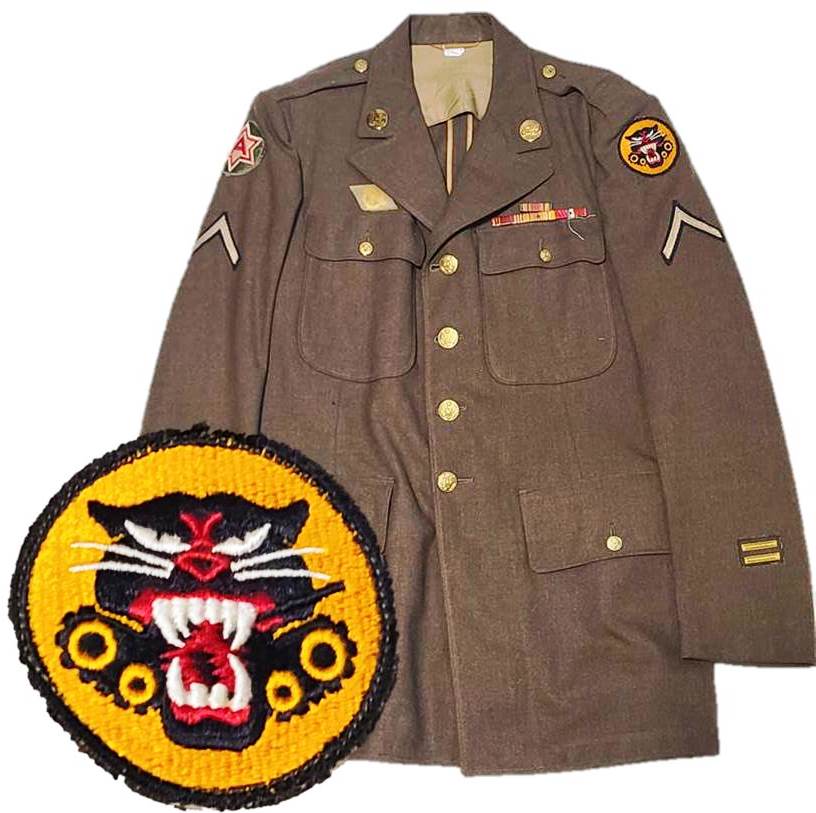
A Tank Destroyer armored crewman's uniform. This veteran served in the Pacific Theater, part of the very small Tank Destroyer force sent there. The island and jungle warfare was ill-suited to tanks and tank destroyers that fought with distinction in Europe.

Ike jacket to a Pacific veteran, who fought in the 184th Infantry Regiment of the 7th Infantry Division. The 7th fought in the Aleutians and then deployed to the Pacific, fighting at Kwajalein, the Philippines, and Okinawa.
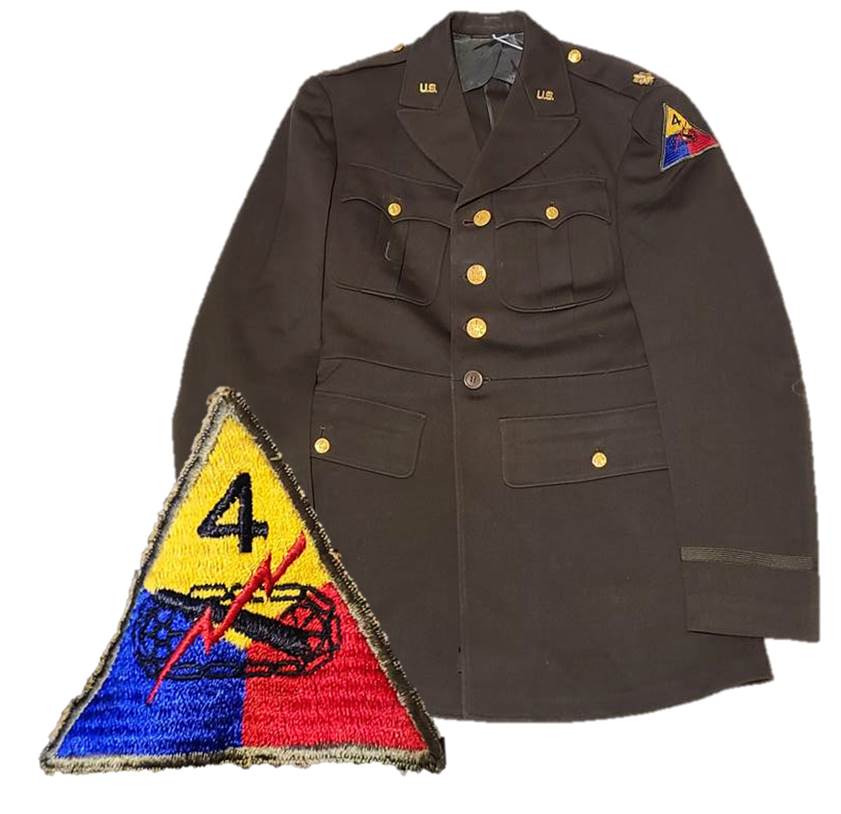
Officer's uniform from a veteran of the 4th Armored Division. He was a Sherman tank commander and wounded in the breakout in Normandy.
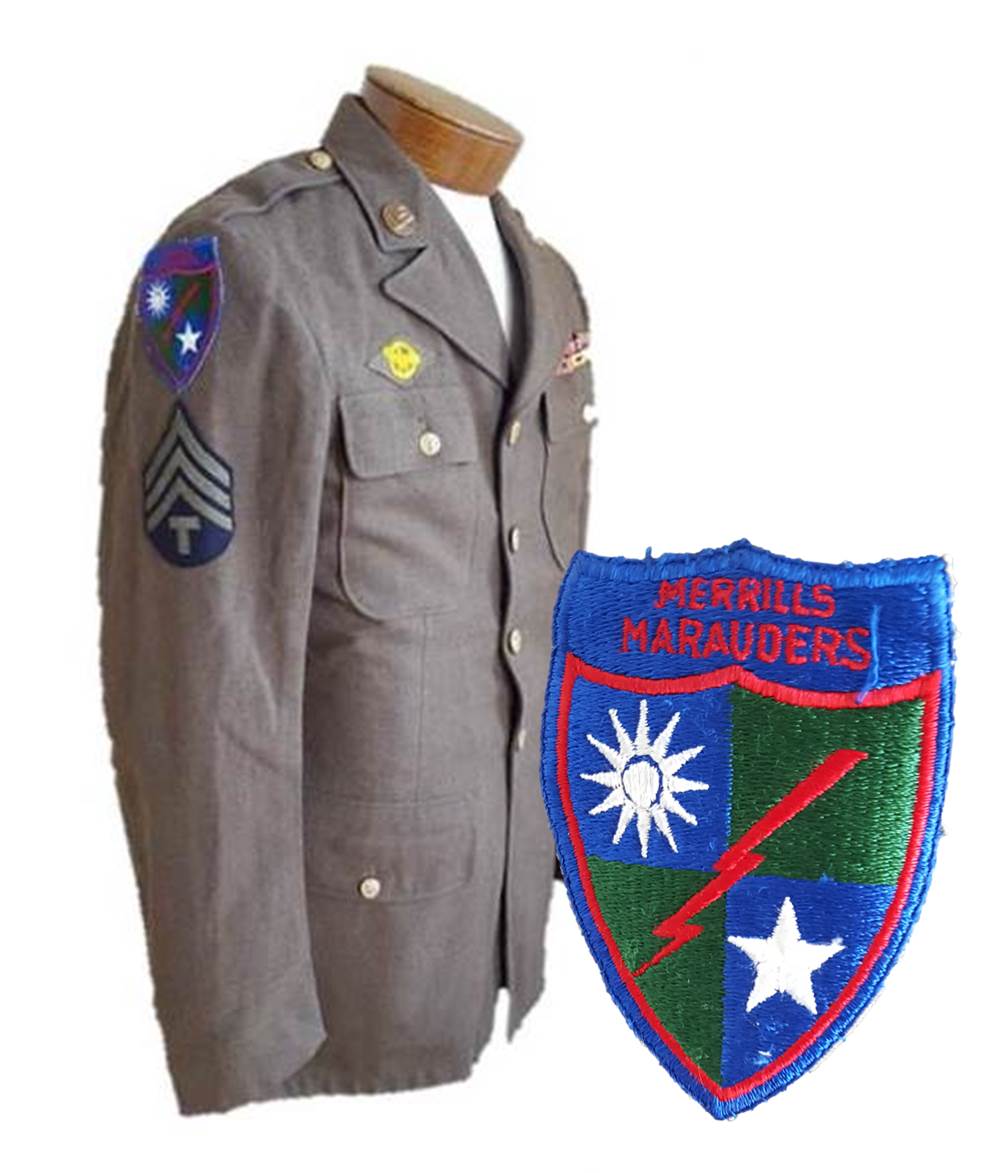
A very rare uniform to a veteran of the Merrill's Marauders. Officially the 5307th Composite Unit, this commando group was tasked to raid far behind Japanese lines in the CBI theater of operations. They engaged in jungle warfare from 1943-1944, taking heavy casualties to combat and disease but inflicting heavy losses against the Japanese.
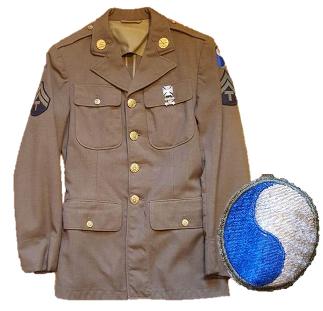
Enlisted man's uniform to a veteran of the 29th Infantry Division. Parts of the 29th were in the first wave ashore on Omaha Beach during D-Day.
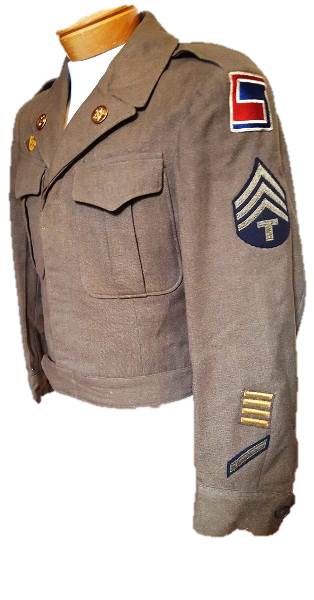
Standard "Eisenhower" or "Ike" jacket, patched to a Signals enlisted man of the 69th Infantry Division. The Ike jacket was standardized in 1944 and phased out in the late 1950s.
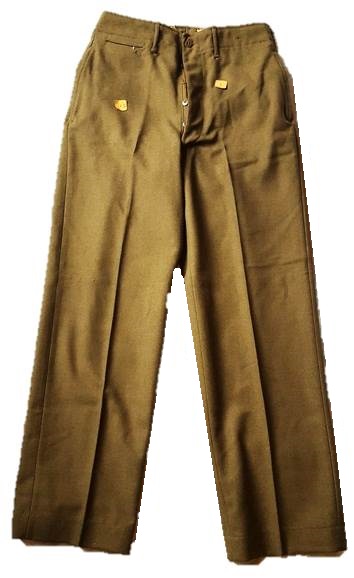
Standard wool trousers worn as part of the uniform, both in dress and field situations. This pair is unworn and still has intact paper "cutter tags" stapled to it.
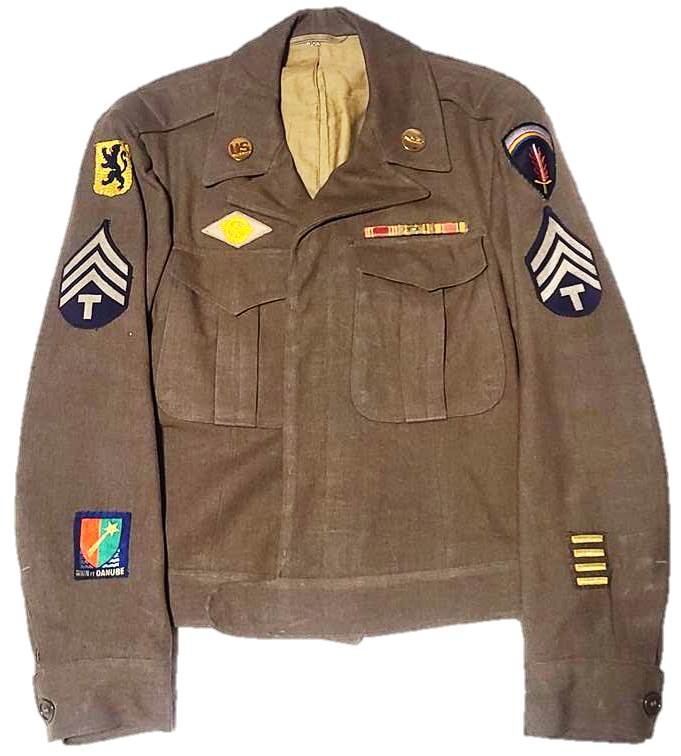
Ike jacket to a veteran of the 93rd Cavalry Reconnaissance Squadron, also patched to SHAEF. On the sleeve is the patch of the French 1st Army, which fought as part of the Allied forces 1944-1945.
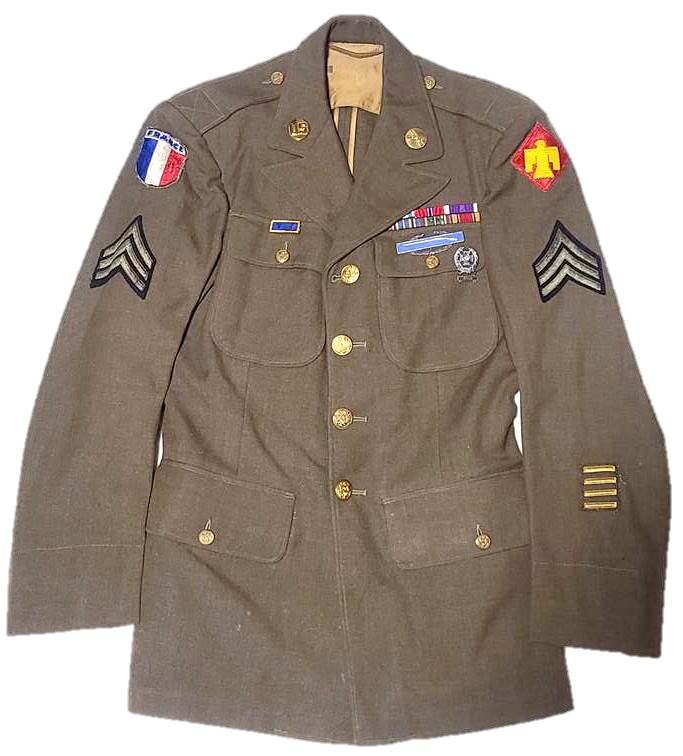
Uniform jacket to a Silver Star winner of the famed 45th "Thunderbird" Infantry Division. Hailing from Columbus, Ohio, this veteran saved a comrade and commanded a machine gun on a hill in Italy on Dec. 22, 1943 that broke up an enemy attack--for which he was awarded the Silver Star. He served with the 7th Army in the early Occupation of Europe immediately after the war.

1st Lieutenant's uniform from a Kenosha, Wisconsin veteran. Patches indicate service in the 15th Cavalry Grop and 17th Cavalry Regiment
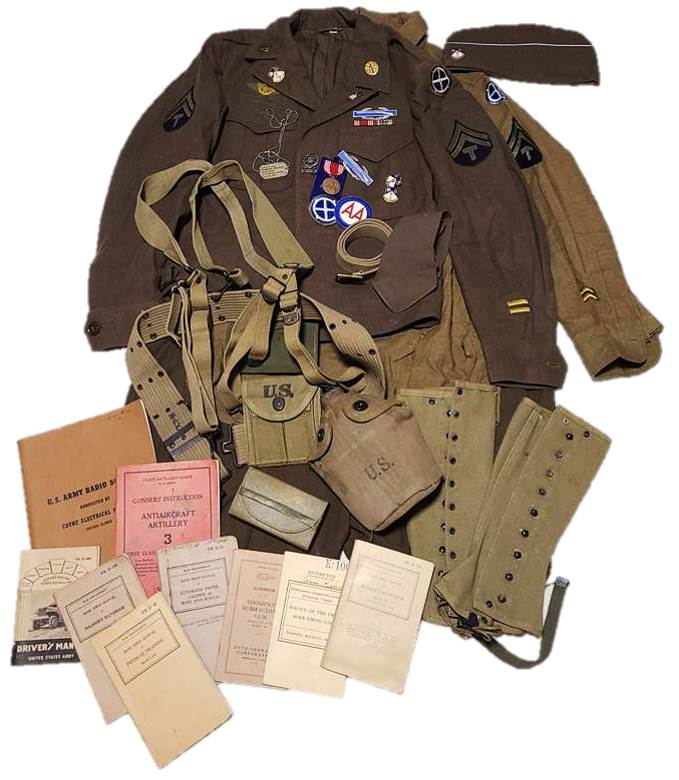
Uniform and gear of a Racine, Wisconsin veteran of the 134th Infantry Regiment, 35th Infantry Division. He saw combat in France from mid 1944-1945.
Field Uniforms
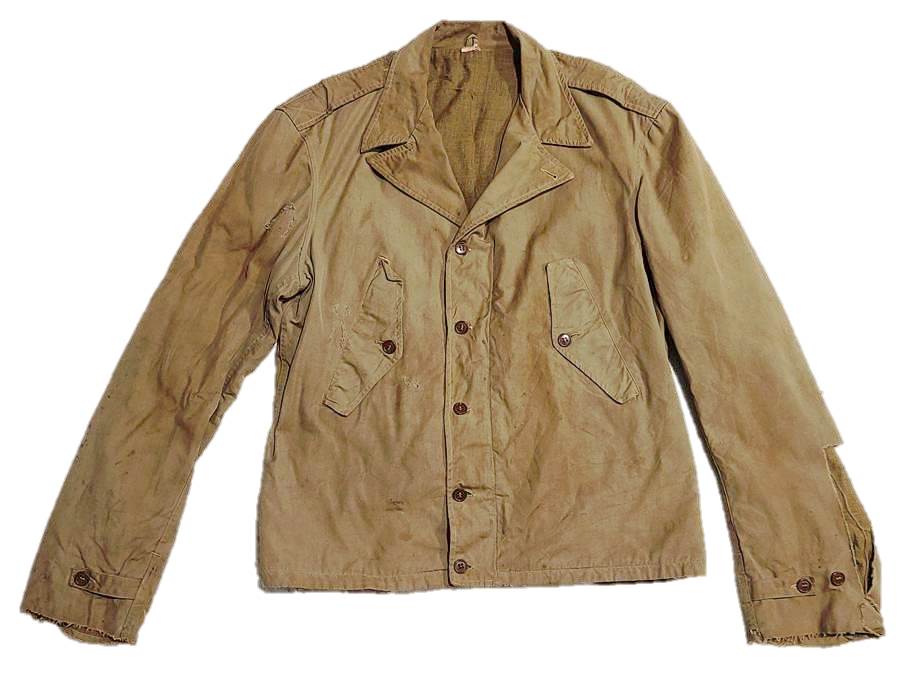
M1938 "Parsons" jacket, which was a predecessor to the more common M41. This was identical in all respects except the front pockets, which had buttoning flaps.

"Tanker" winter jacket favored by armored troops. They were more insulated than standard field jackets and highly prized by those officers and men who could get them. This one is shown with a slung shoulder holster.
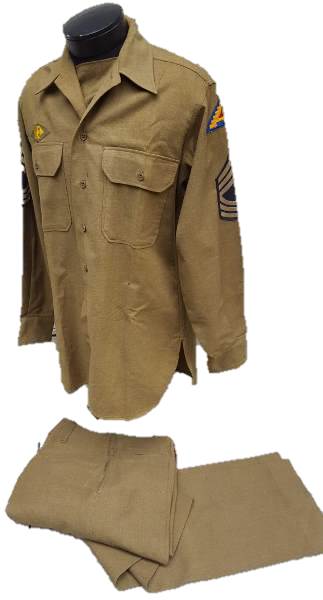
M37 wool service uniform, the standard for WWII soldiers.
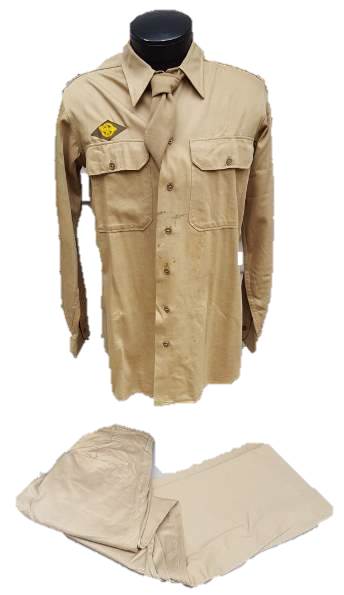
Khaki cotton summer uniform set
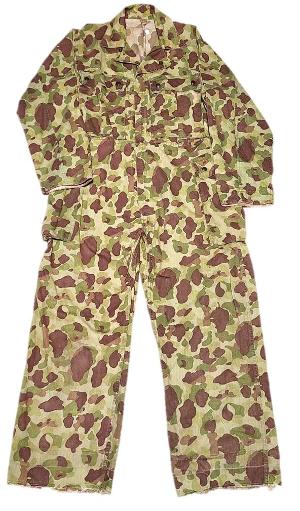
US Army frogskin pattern coveralls. This pattern was reversible and used for a short time in the ETO and PTO by different units.
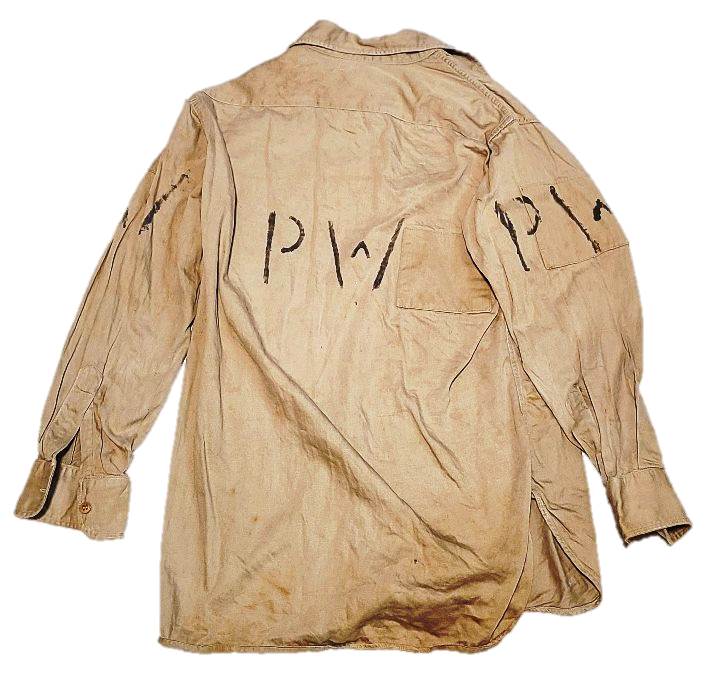
Reverse view of an interesting US cotton shirt reissued to prisoners of war. This shows evidence of patching and repairs, with stenciled "PW" on the sleeves and back.
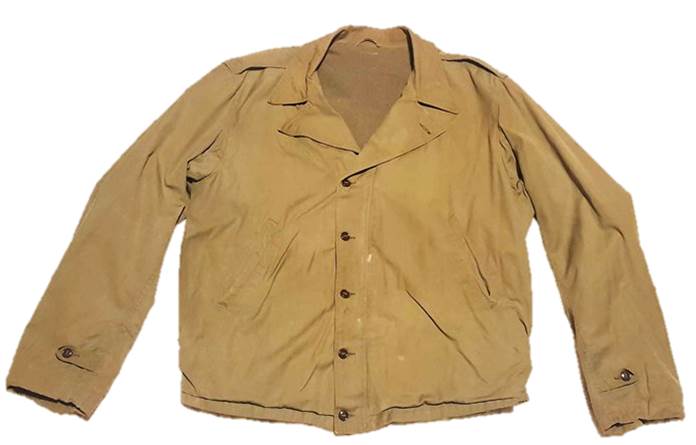
A M1941 field jacket. This was the standard coat of the US armed forces until being replaced in late 1944 by the M1943 jacket. The M41 had a zipper, buttons, and a thin wool interior. It was prone to fading and fraying, and not known for its durability.
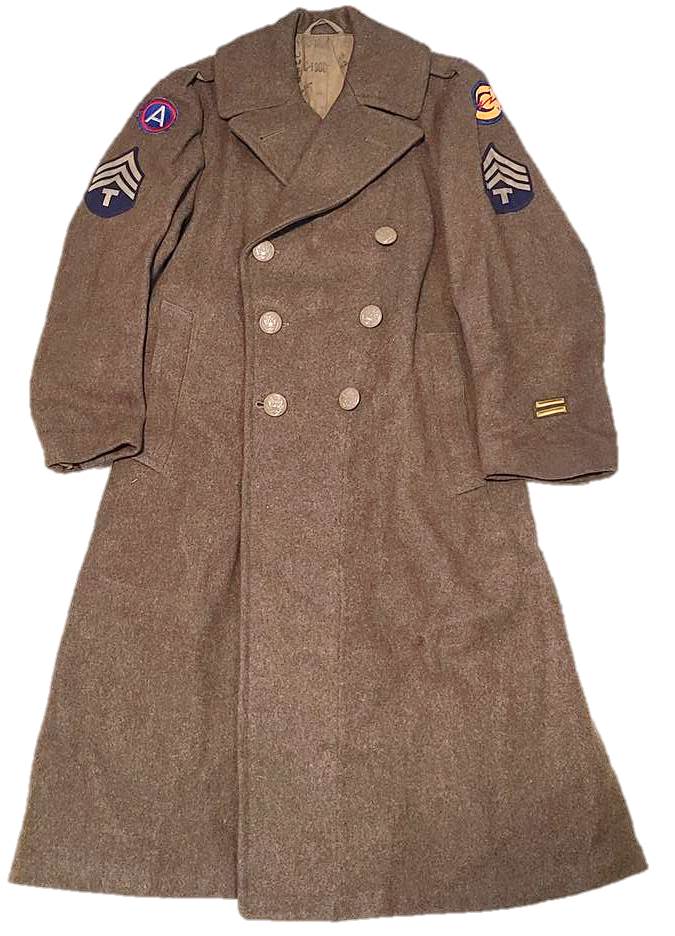
WWII wool overcoat, issued for cold protection. First issued in 1939 with brass buttons, this model features post-1942 plastic buttons--a necessity in conserving brass for the war effort. This example is from a Milwaukee veteran who served in the 3rd Army and postwar Constabulary forces in Germany.
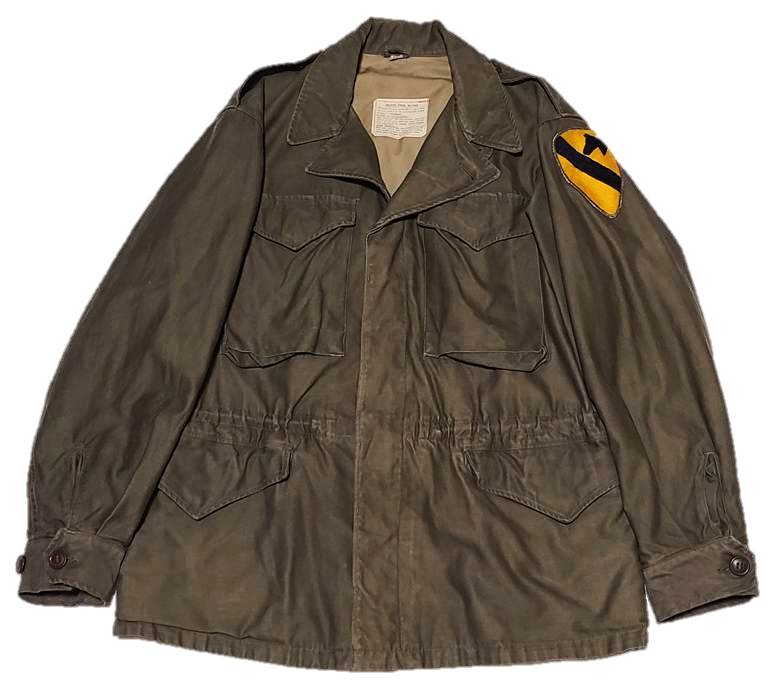
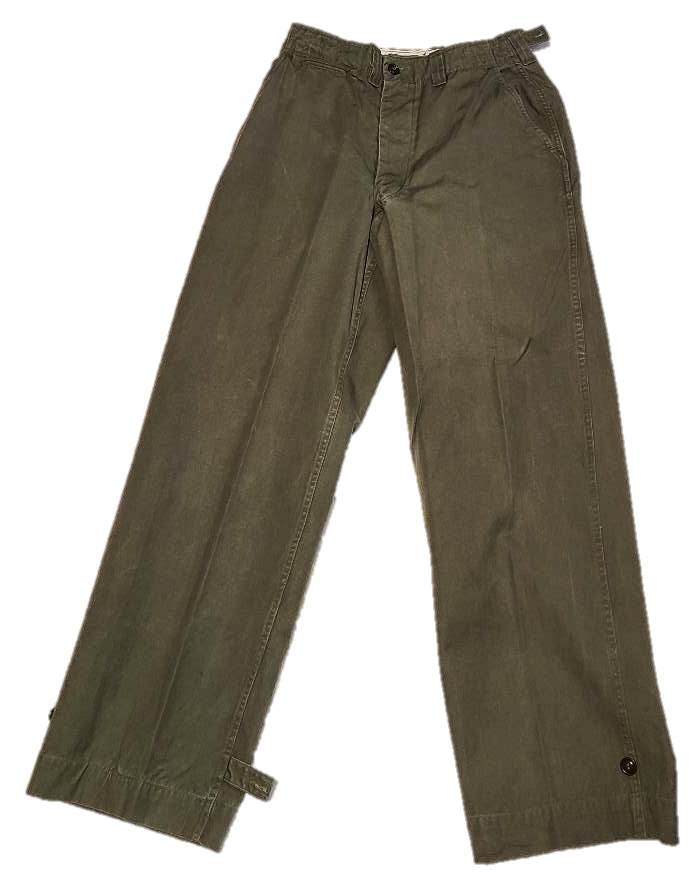
Model 1943 field jacket and pants. These were intended to be layered over uniforms for greater warmth, and produced in wind-resistant sateen. The jacket bears the shoulder patch of the 1st Cavalry.
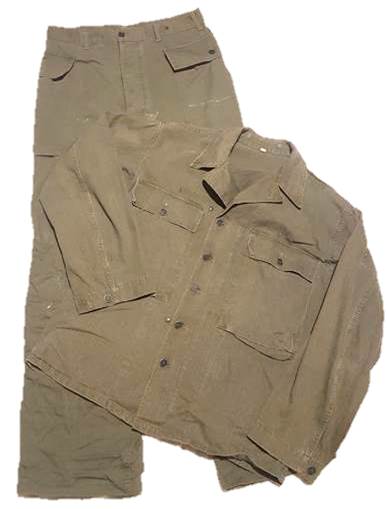
Herringbone twill uniform set, as worn in combat or during work duties. This was a lightweight cotton material that was preferred to wool uniforms, especially in the Pacific Theater.
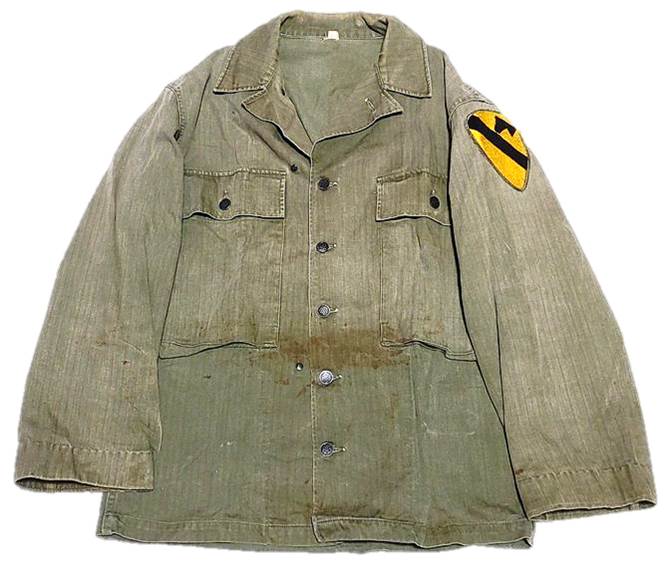
HBT jacket with 1st Cavalry patch
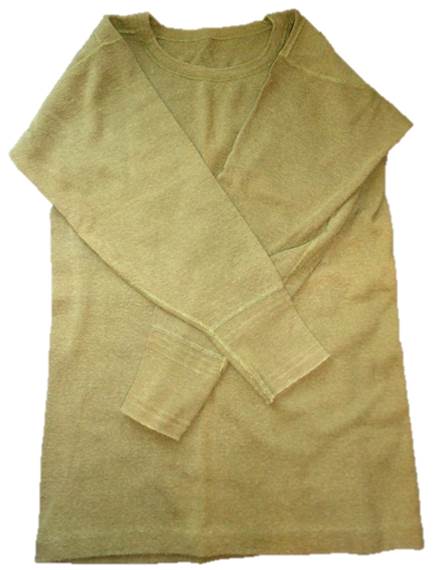
Thermal undershirt worn by US troops in cold climates.
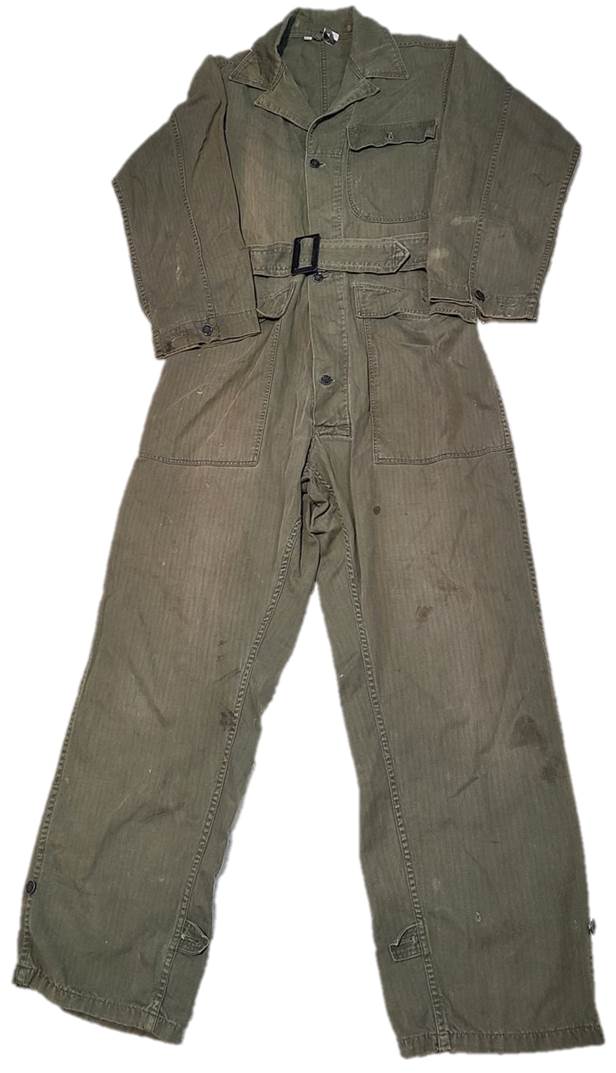
HBT coveralls, as oftenused by vehicle and aircraft crews
Headgear
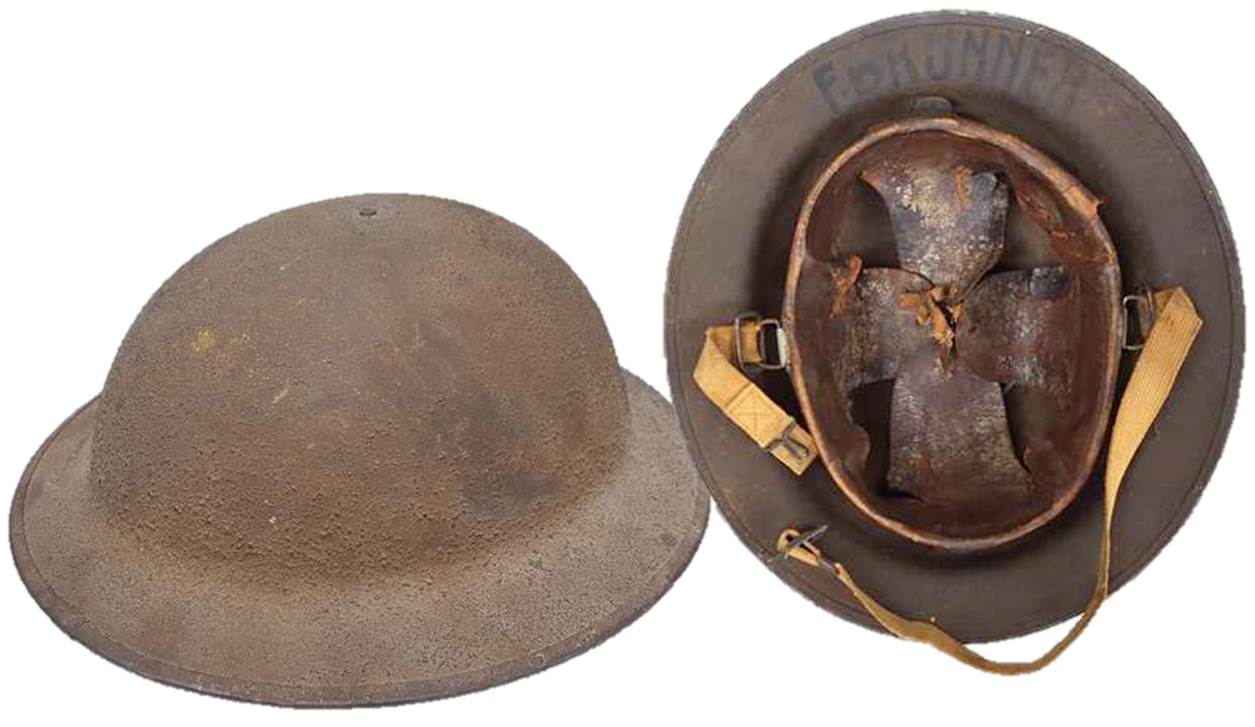
M1917 A1 "Kelly" helmet. These were WWI helmet shells upgraded with new liners and chinstraps. They were used through 1941 and worn at Midway, Pearl Harbor, and the Philippines.
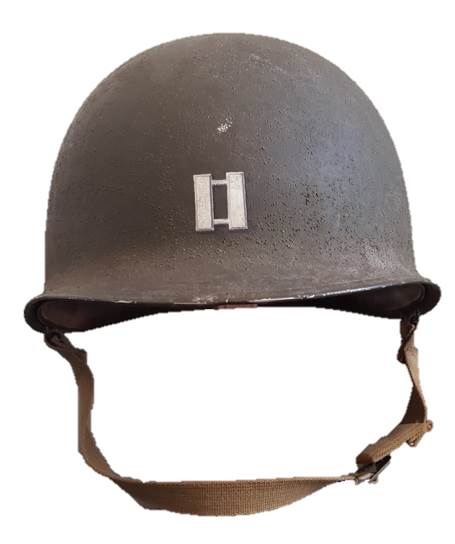
The M1917A1 helmet was replaced in 1941-2 by the this M1 helmet. This had a steel shell and removable liner. This spectacular painted officer's helmet from a veteran of the 9th Infantry Division. This veteran served in the ETO and later in the Korean War. It was not uncommon for officers to add painted insignia to their helmets.
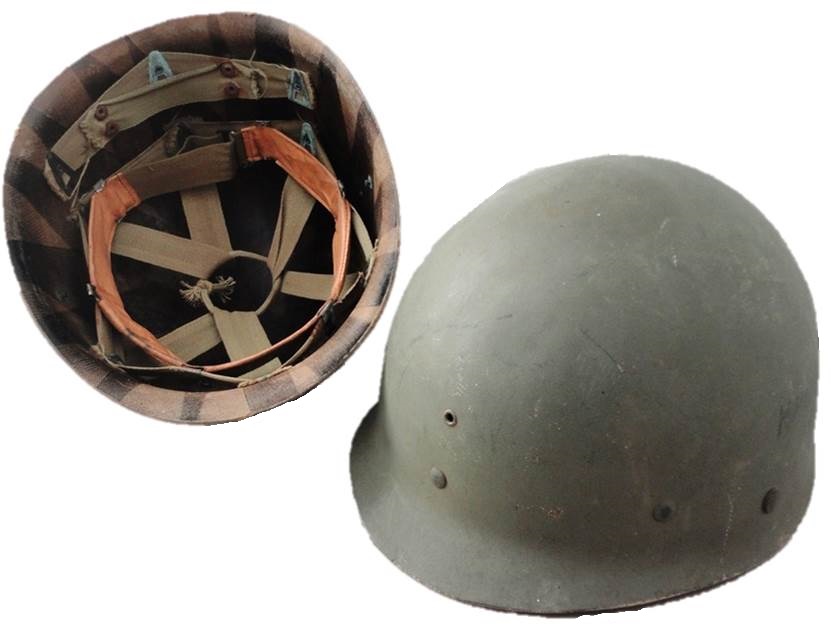
Liners for the M1 helmet. These were made of plastic and fit inside the steel helmet shell.
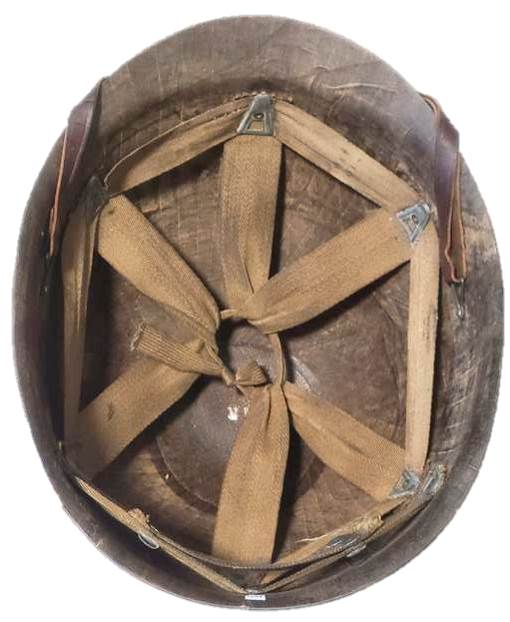
Scarce early-war low pressure liner by Hood Rubber.
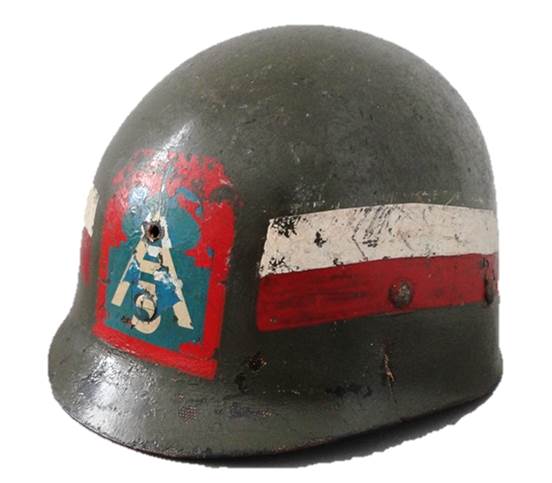
Painted helmet liner of a Military Policeman of the 5th Army.

Camouflage netting for the M1 helmet.
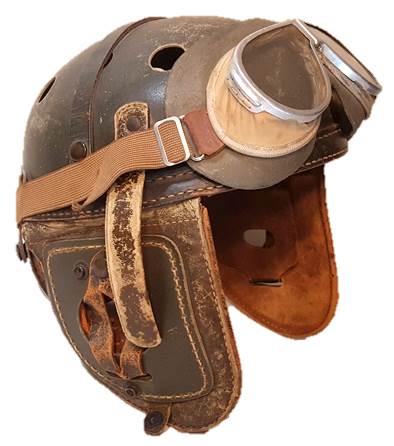
M1938 "Tanker" helmet as worn by armored troops in tanks. Headphones would be snapped into the ears. A pair of Resistalgoggles are pulled over the eyes to protect against dust.
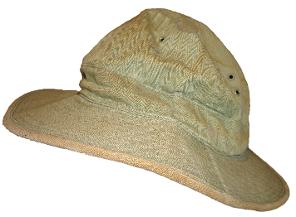
"Daisy Mae" fatigue cap worn for work and in warm climates.

An officer's dress cap. This one was worn by an officer in the 5th Army who served in Italy.

M1943 fatigue cap, also worn for worn and in warm climates when the helmet was not needed.
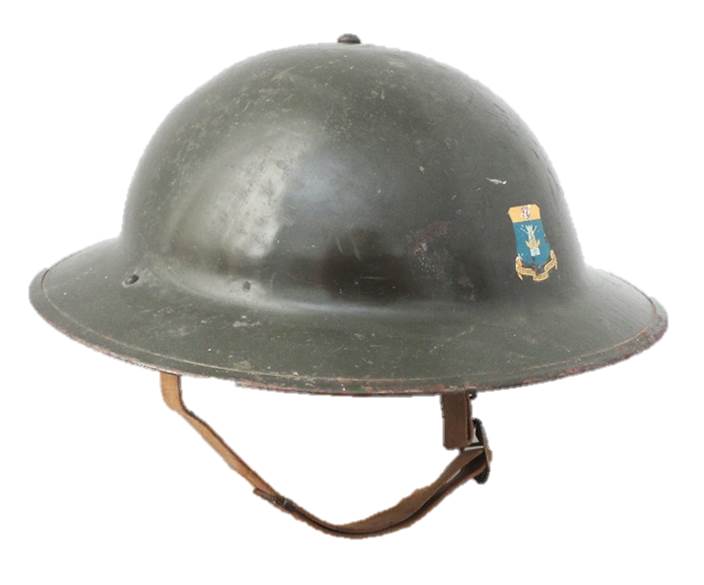
Officer's "Kelly" helmet from the prewar years. It has the insignia of the 186th Infantry, of the Oregon National Guard.

Late-war M1 helmet. This was an improvement on the earlier version by adding flexible chinstrap bales.
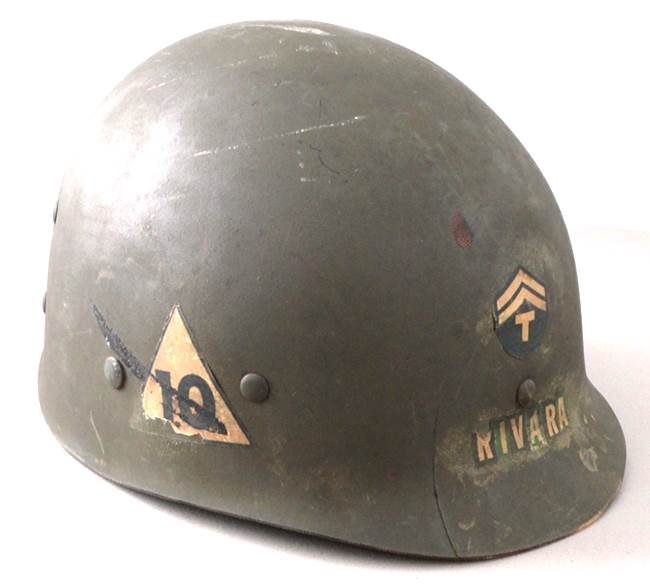
Helmet liner, identified to a veteran of the 10th Armored Division.

Cavalry, Officers, and Infantry garrison covers. The colored piping denotes branch of service.
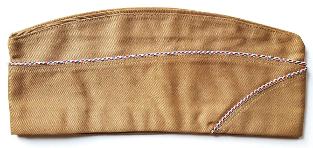
Very rare garrison cover with red, white, and blue piping, indicating service in the First Special Service Force. This was a commando group that served in the Aleutians and in Europe.
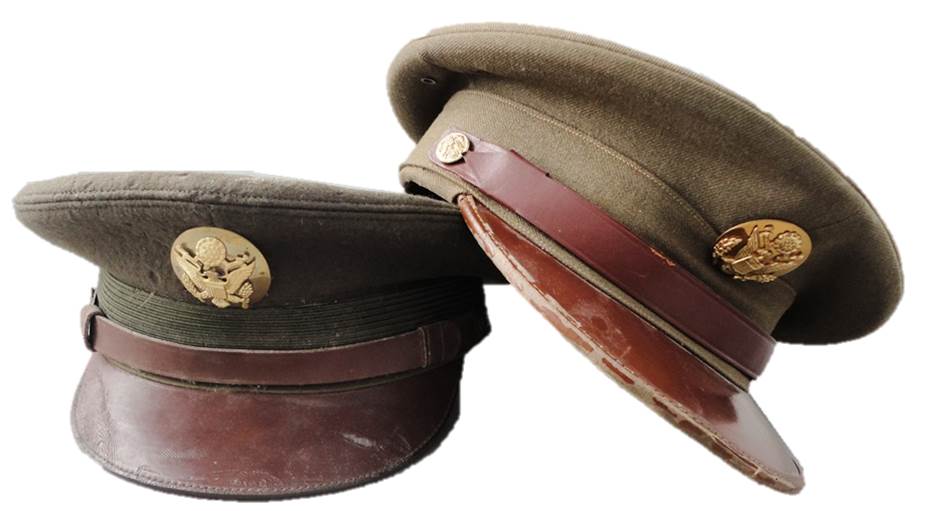
Enlisted men's visor caps. These were worn with the wool dress uniform.
Knit "Jeep" cap, often worn under the M1 helmet for warmth.
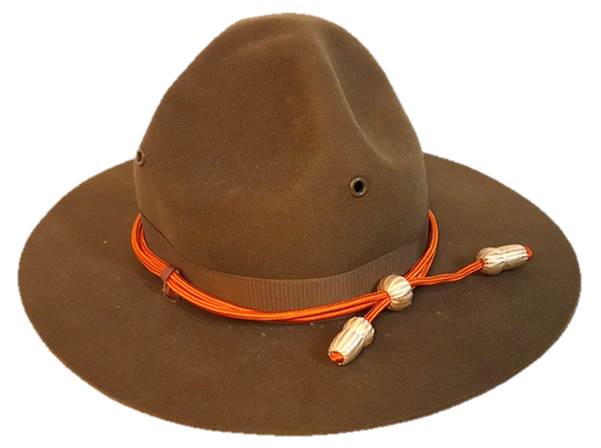
A carryover from World War I, the Campaign Hat is today often associated with drill instructors. It saw limited service in the interwar period but was retained by some units, particularly cavalry. This wartime example has orange Signal Corps cords.
Footwear
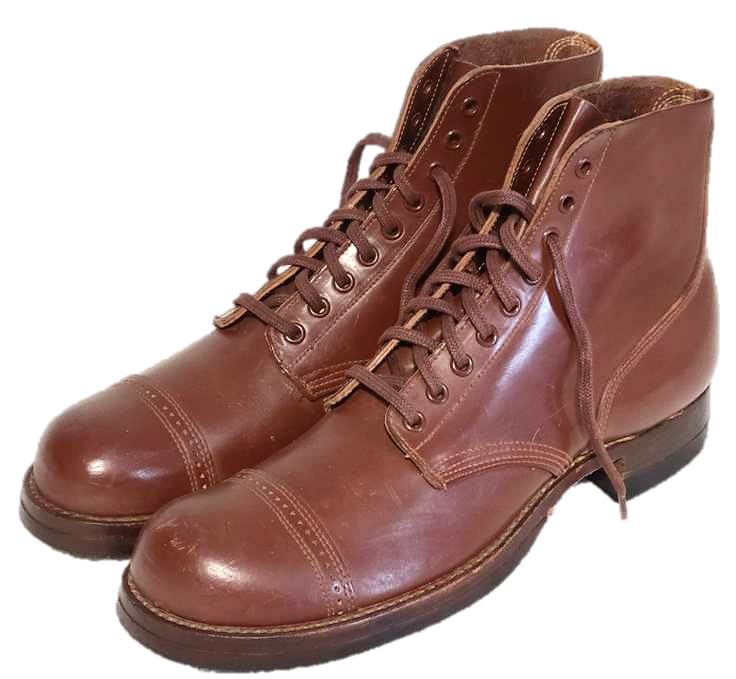
Service shoes, which were worn from the prewar years until replaced by the M-1943 boots late in the war.
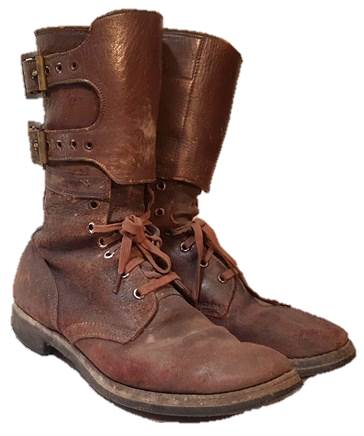
A pair ofM1943 double-buckle boots, worn in WWII from 1944-1945.
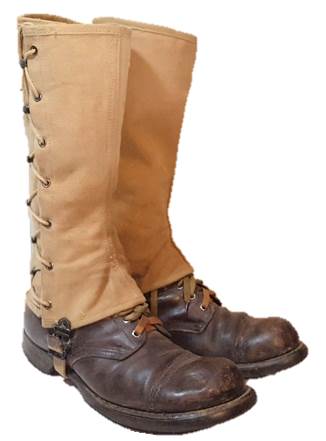
Early service shoes with leggings.

Leggings, as worn with service shoes. Pants were tucked in to the tops. These were worn until the service shoes were replaced with the M1943 double-buckle boots in mid-1944.